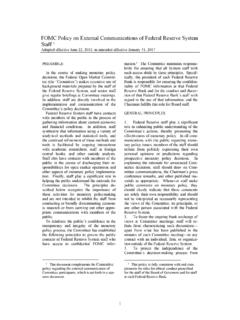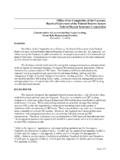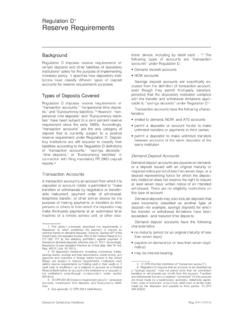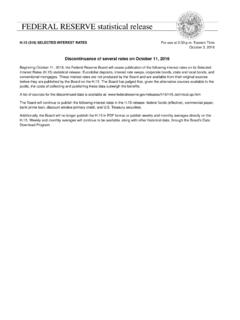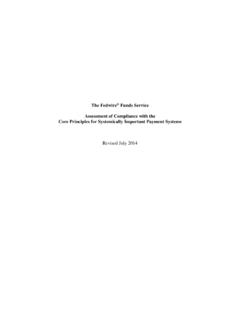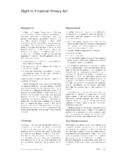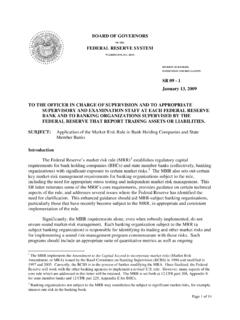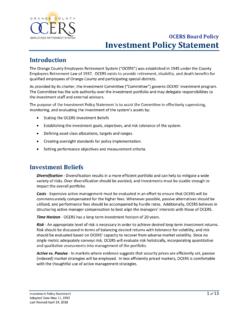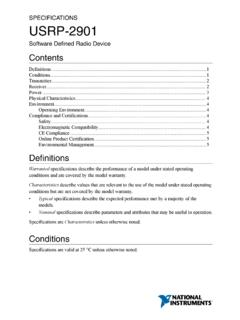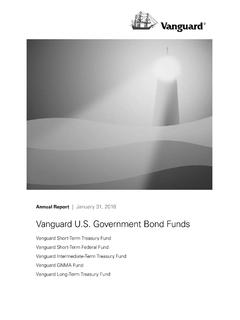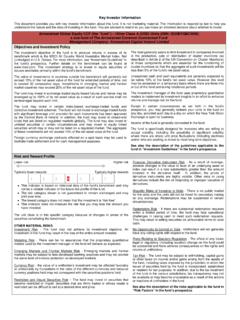Transcription of The U.S. Syndicated Loan Market: Matching Data Hayes ...
1 Finance and Economics Discussion Series Divisions of Research & Statistics and Monetary Affairs Federal Reserve Board, Washington, The Syndicated Loan Market: Matching Data Gregory J. Cohen, Melanie Friedrichs, Kamran Gupta, William Hayes , Seung Jung Lee, W. Blake Marsh, Nathan Mislang, Maya Shaton, and Martin Sicilian 2018-085. Please cite this paper as: Cohen, Gregory J., Melanie Friedrichs, Kamran Gupta, William Hayes , Seung Jung Lee, W. Blake Marsh, Nathan Mislang, Maya Shaton, and Martin Sicilian (2018). The Syndicated Loan Market: Matching Data, Finance and Economics Discus- sion Series 2018-085. Washington: Board of Governors of the Federal Reserve System, NOTE: Staff working papers in the Finance and Economics Discussion Series (FEDS) are preliminary materials circulated to stimulate discussion and critical comment.
2 The analysis and conclusions set forth are those of the authors and do not indicate concurrence by other members of the research staff or the Board of Governors. References in publications to the Finance and Economics Discussion Series (other than acknowledgement) should be cleared with the author(s) to protect the tentative character of these papers. The Syndicated Loan Market: Matching Data Gregory J. Cohen , Melanie Friedrichs , Kamran Gupta , William Hayes , Seung Jung Lee , W. Blake Marsh , Nathan Mislang , Maya Shaton , and Martin Sicilian . December 2018. Abstract We introduce a new software package for determining linkages between datasets without common identifiers. We apply these methods to three datasets commonly used in academic research on Syndicated lending: Refinitiv LPC DealScan, the Shared National Credit Database, and S&P Global Market Intelligence Compustat.
3 We benchmark the results of our match us- ing results from the literature and previously matched files that are publicly available. We find that the company level Matching is enhanced by careful cleaning of the data and con- sidering hierarchical relationships. For loan level Matching , a tailored approach based on a good understanding of the data can be better in certain dimensions than a more pure machine learning approach. The R package for the company level match can be found on Github at JEL Classification: C55, C88, E44, G21. Keywords: bank credit, Syndicated loans, probabilistic Matching , company level Matching , loan level Matching . We thank Mary Chen, Danno Lemu, Nicholas Stewart, and Cristhian Vera for excellent research assistance. We thank Mark Carey for many helpful discussions and seminar participants at the Federal Reserve Board and the Federal Reserve Bank of Kansas City for comments.
4 All remaining errors and omissions are our own. This work was completed while Friedrichs, Gupta, Hayes , and Mislang were employed at the Federal Reserve Board. The views expressed are our own and not the views of the Federal Reserve Bank of Chicago, the Federal Reserve Bank of Kansas City, the Board of Governors of the Federal Reserve System, nor anyone else associated with the Federal Reserve System. Some of the data used here are confidential and were processed solely within the Federal Reserve System. Affiliations: . Federal Reserve Bank of Chicago, 230 S LaSalle St, Chicago, IL 60604.. Stern School of Business, New York University, 44 West 4th Street, New York, NY 10012.. Booz Allen Hamilton, 901 15th St. NW, Washington, DC 20005.. Columbia Law School, Columbia University, 435 West 116th Street, New York, NY 10027.
5 Board of Governors of the Federal Reserve System, 20th and C Sts., NW, Washington, DC 20551.. Federal Reserve Bank of Kansas City, 1 Memorial Drive, Kansas City, MO 64198.. Economics Department, Arts and Sciences, Cornell University, 109 Tower Road, 404 Uris Hall, Ithaca, NY 14853. Correspondence: 1 Introduction Over the last decade, the Syndicated loan market has proven to be a robust laboratory for explor- ing corporate finance and banking topics due to its unique features and the availability of loan level data. Highly influential papers have explored such fundamental corporate finance topics as asymmetric information and loan pricing (Lee and Mullineaux, 2004; Sufi, 2007; Ivashina, 2009), borrower reputation (Beatty, Liao, and Zhang, 2015; Ivashina and Kovner, 2011; Chaudhry and Kleimeier, 2015), and the balance sheet effects of loan covenant violations [Chava and Roberts (2008), Nini, Smith, and Sufi (2012), Roberts and Sufi (2009)].
6 Additionally, researchers have in- vestigated issues related to financial stability [Ivashina and Scharfstein (2010), Aramonte, Lee, and Stebunovs (2015)], monetary policy transmission [Ippolito, Ozdagli, and Perez (2013), Cohen, Lee, and Stebunovs (2016), Lee, Liu, and Stebunovs (2017)] and the effect of credit market shocks on firm employment [Chodorow-Reich (2014)] and investment [Correa, Sapriza, and Zlate (2012)]. Syndicated loan research tends to be driven by three key datasets: Refinitiv LPC DealScan, the Shared National Credit database, and the S&P Global Market Intelligence Compustat database. While each of these are valuable in their own right, in combination they can provide a comprehensive look at loan pricing at origination, changes in loan terms and ownership over time, and borrower balance sheet health, respectively.
7 Indeed, many researchers have combined these datasets in their work, though most are not publicly available and the Matching methods are unknown. Those that are available, most prominently Chava and Roberts (2008)'s Refinitiv LPC DealScan S&P Global Market Intelligence Compustat match, which forms the basis of most Syndicated loan research, are infrequently updated and, therefore, may be insufficient for answering research questions on recent developments in the Syndicated loan market. This paper attempts to address these limitations by providing methods to match observations across datasets that lack common identifers. The paper has four key goals. First, we hope to reduce the manual Matching burden that researchers face when assembling matched datasets. Second, we hope to update existing matched datasets using these methodologies to further the research agenda.
8 Third, we hope to provide a common methodology for assembling Syndicated loan market data that will provide a benchmark for research going forward. Finally, our methods can be applied to more generic string Matching problems outside the scope of Syndicated lending that involve linking different information from varying sources for a common business entity. Thus, we seek to encourage dialogue among researchers by proposing open and replicable methods for constructing research datasets. The remainder of the paper is organized as follows: Section 2 reviews major data sources avail- able for conducting research using Syndicated loan data. Section 3 describes the general Matching methods we have developed. Section 4 discusses the application of these methods to the Refini- tiv LPC DealScan S&P Global Market Intelligence Compustat link first provided by Chava and Roberts (2008).
9 Section 5 discusses the incorporation of company hierarchical information into 1. the company level match algorithm. Section 6 discusses the application of these methods to the SNC DealScan link, which provides a new loan level data match. Section 7 concludes. 2 Syndicated Loan Data Sources Academic research on the Syndicated loan market commonly relies on three data sources. Refinitiv LPC DealScan is a commercially available dataset that provides information on Syndicated loan originations. These data are widely used by both academics and market practitioners. The Refinitiv LPC DealScan data are frequently paired with firm level balance sheet data from S&P Global Market Intelligence Compustat using the links provided by Chava and Roberts (2008). Researchers at federal bank supervisory agencies have access to data from the Shared National Credit (SNC).
10 Program, which records outstanding Syndicated loans at various intervals. Each of these datasets have specific strengths, so, in combination, their various weaknesses can be overcome. Each dataset is discussed in turn below. Refinitiv LPC DealScan Refinitiv LPC DealScan ( DealScan ) is the most commonly used Syndicated loan market database due to its commercial availability. DealScan identifies loan originations from borrower SEC filings, arrangers and other lenders, and various public sources. Lenders are willing to submit data for use in constructing league tables which are bank level rankings of new originations that are helpful for attracting new investment banking clients. DealScan's data collection began in the early 1990s and has since been backfilled with prior year originations [Ivashina (2009), Murfin and Pratt (forthcoming)].

